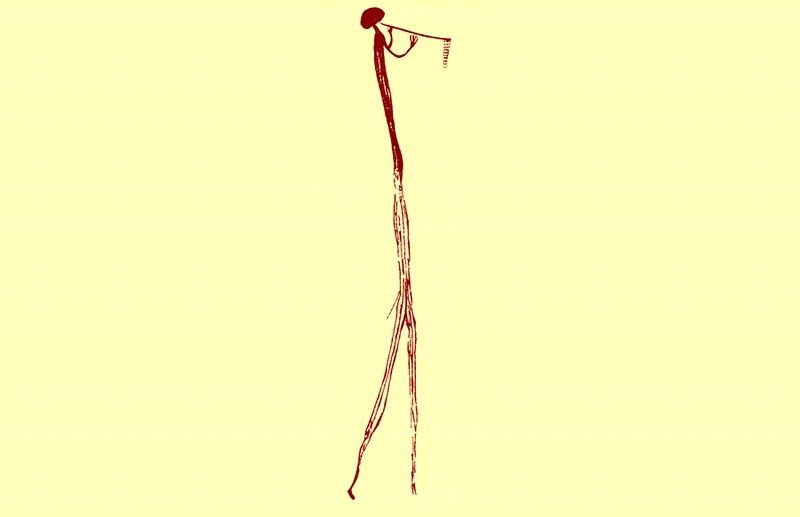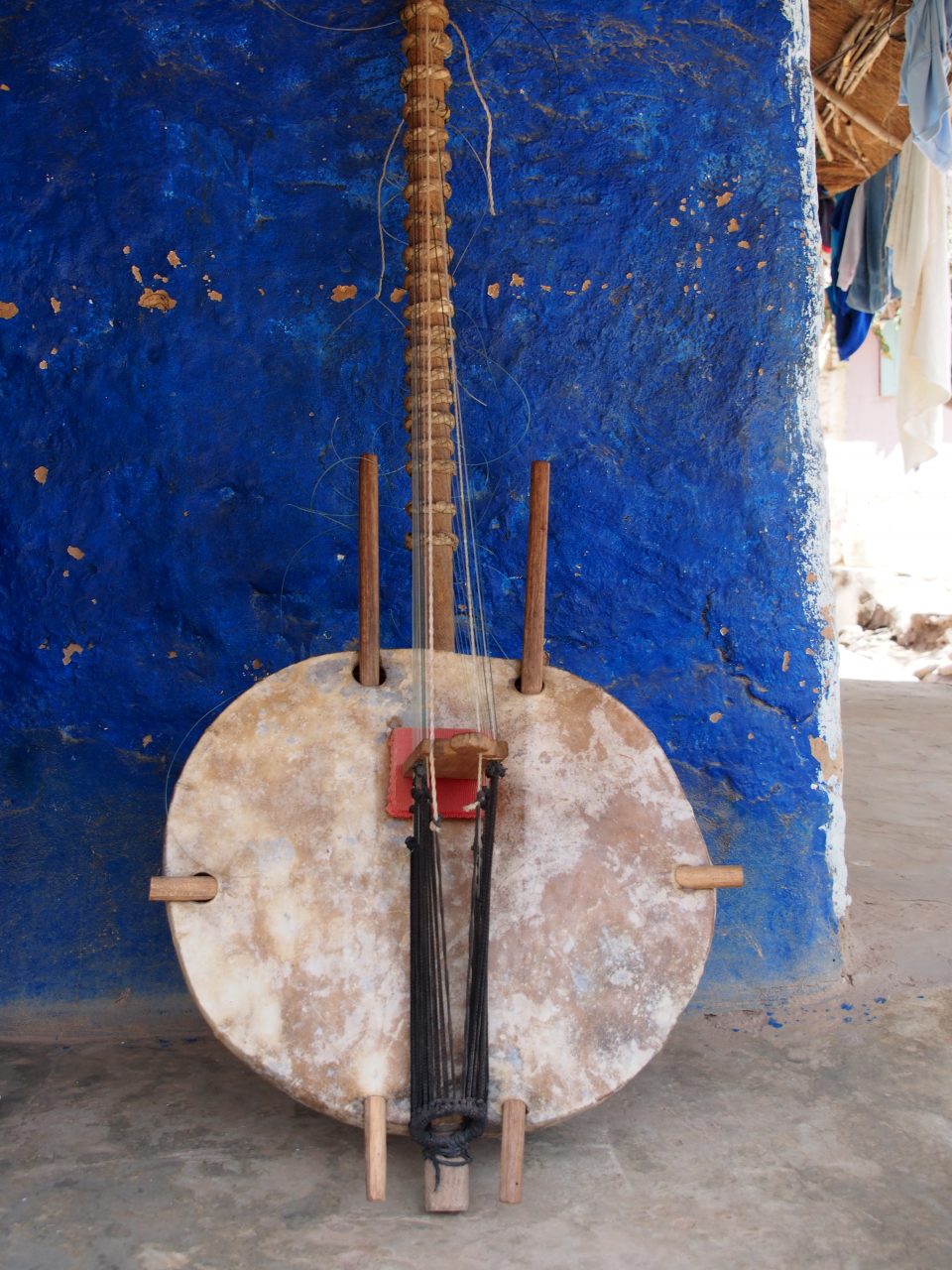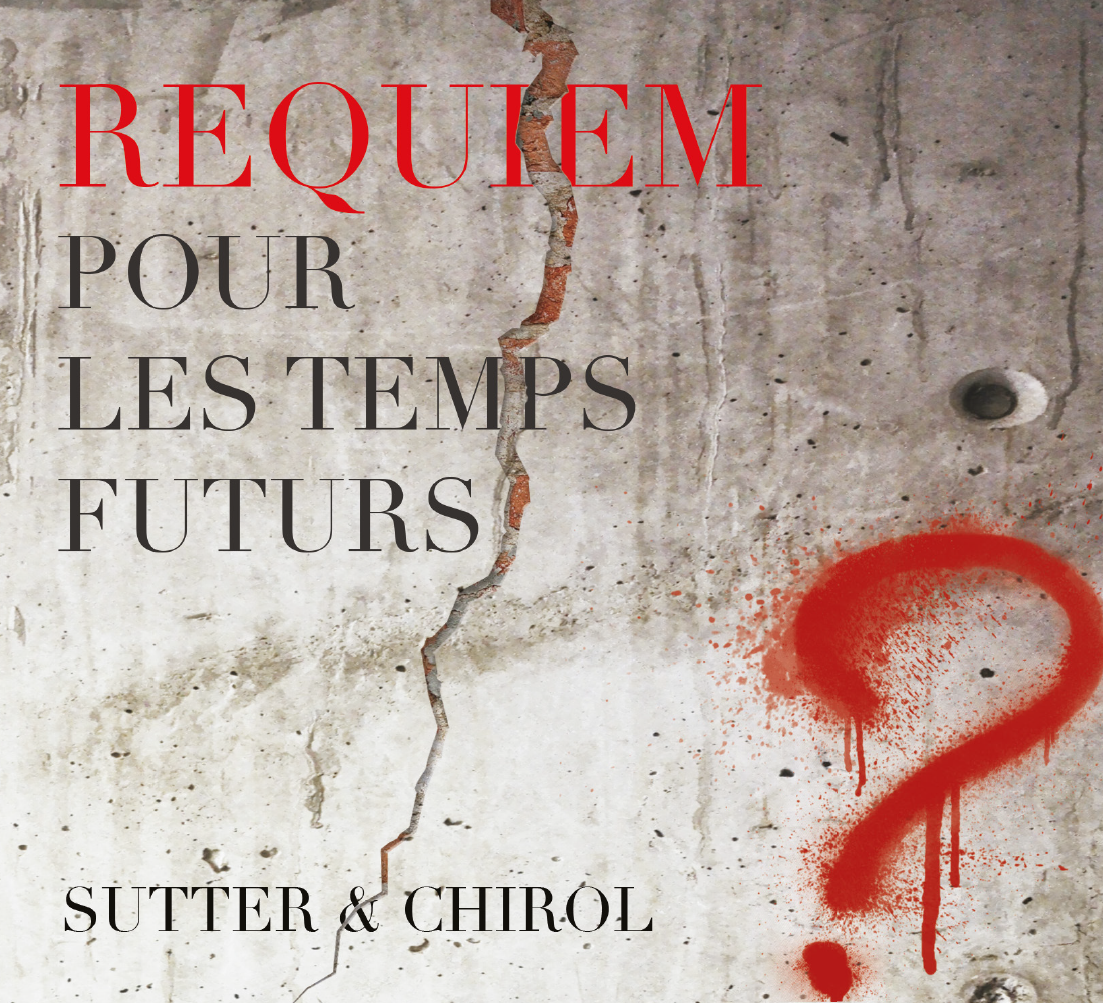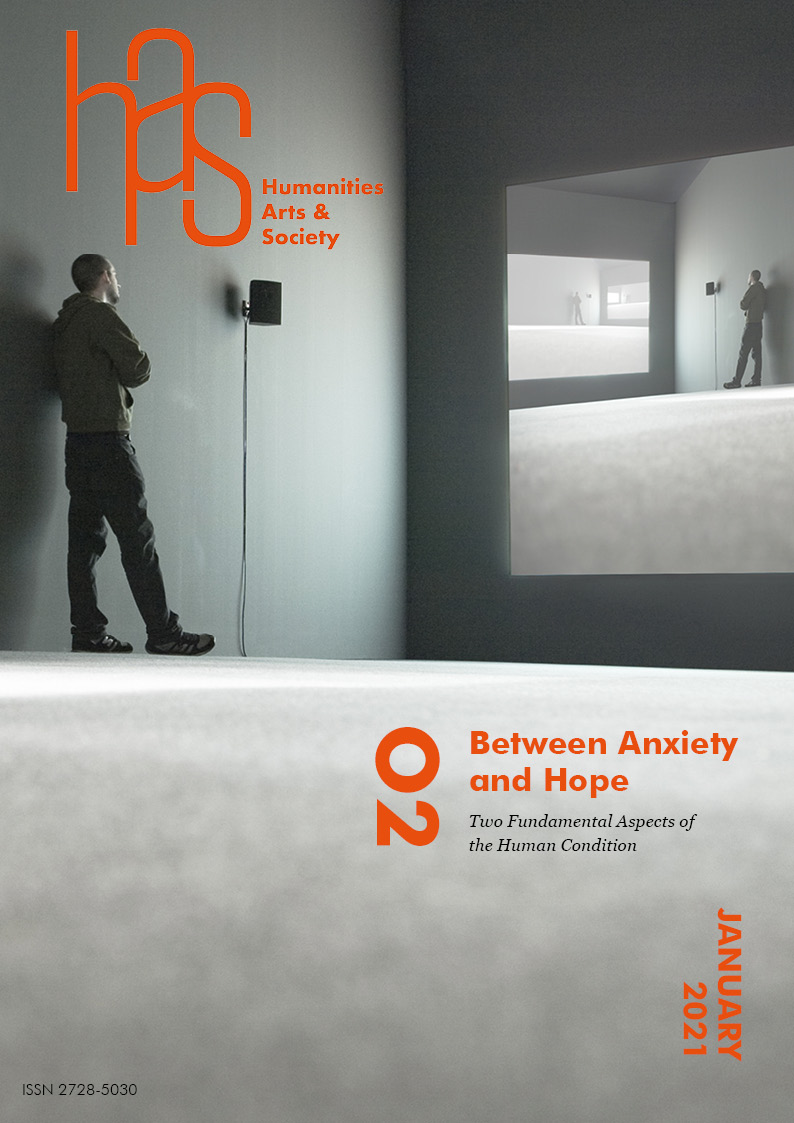
Copyright Leakey Family.
Living at the beginning of the 21st century can create the oppressive sensation of being subjected to a flow of alarming information and extreme events that are constantly shaking us. The coronavirus pandemic, religious fanaticism, the collapse of biodiversity, and global warming—to name but a few—are fueling a widespread feeling of uncertainty, and provoking our individual and collective existential anxieties in unprecedented ways. Nevertheless, are we really confronted with an objectively new phenomenon?
Our present navel-gazing can easily make us forget that our ancestors also had to go through terrible ordeals, starting with the most distant—prehistoric man—who was prey to many terrible dangers. To deal with tragic situations, and to curb insidious fears with inhibiting and potentially harmful powers of survival, Homo sapiens has devised many different responses. Nowadays, psychologists group them under the generic term “coping strategies.” With a view to identifying the motivations preceding the birth of music, we shall evoke those that integrate not only the creation of modalities of symbolic and artistic expression, but also the deployment of social rituals. The rhombuses, whistles, and flutes found during multiple archaeological excavations are the first evidence of the existence of sound and musical production, dating back to the Palaeolithic era.
In some societies, those who handle musical instruments occupy a marginal position, and are known as shamans. An intermediary between humans and the spirits of nature, the shaman, or shamanka, is responsible for cultural and spiritual transmission, the practice of magical rituals, the healing of the sick, and sometimes even the leadership of the tribe. These peoples accorded music a preponderant role that contrasts radically with the one it plays in contemporary Western societies—an object of everyday consumption, most often intended to distract or manipulate. It sets the pace of our wanderings in large commercial districts, distracts our attention from the disturbing machinery and noises of lifts, and incites us to vote for one candidate rather than another, among other examples from an almost infinite list.

In the relatively recent past, music has proven the extent to which it can influence major social issues. Jazz, in particular, was one of the spearheads used by the descendants of black American slaves to achieve their emancipation. The freedom regained thanks to the abolition of slavery in 1865 was not enough—equality remained to be conquered. That is why, in the 20th century, the emergence and worldwide success of jazz was attributable to generations of black musicians for whom the command of this artistic practice was tantamount to establishing their identity, their excellence, even their superiority. The dazzling progression of virtuosic performers, from ragtime to swing to bebop to free jazz, resulted from—among other things—the desire of black musicians to keep at a distance their white counterparts who, since the 1930s, had been appropriating the jazz codes. A tactic of soft power before its time, jazz is an artistic illustration of the principles of non-violence laid down by Dr. Martin Luther King.
Ironically, recent advances in neuroscience regarding Alzheimer’s disease remind us of what we otherwise might forget, namely that music has extraordinary healing powers. It is not uncommon to find that at an advanced stage of the disease, music remains accessible for certain subjects while language activities fade away. In addition to restoring the desire to communicate, a song, oh so beloved, has the capacity to “awaken the memory and the events associated with it” as Emmanuel Bigand, professor of cognitive psychology at the University of Bourgogne, puts it.
Thanks to music—and, more generally, to the arts and language—Man has risen to the role of Creator. The expression of his potential has engendered a thousand-and-one wonders, but also destruction on such a scale that today, some feel, the prognosis of our species is critical. With this in mind, Pierre-Éric Sutter and I have chosen to compose a musical work that addresses a theme that has almost become taboo in current society—death. Although we constantly hear about the number of losses attributed to terrorism, disease, or tobacco, death paradoxically remains a foreign land, as if we were not directly concerned. In 1975, this distinclty Western singularity was described as a “denial of death” by Louis-Vincent Thomas.
The goal of our project was to embark our listeners upon a philosophical and dreamlike journey in which they would have to transcend their deepest anxieties, among which the implacable certainty of their own finiteness was the master. In order to access the sources of these primitive fears, we first unearthed some thousandyear-old musical instruments such as flutes made of bone and horn, as well as percussion instruments made of animal skins. Then we summoned the ancestral musical traditions of India, Africa, Tibet, and Europe. Finally, we opted for a very ancient musical form whose origin would date back to the 7th century—the requiem. In Latin, requies means rest or appeasement. For us, it is not the repose of the deceased that is at issue, but that of the survivors, those who accompany their loved one to his or her final resting place—that is to say, us. This loved one who is disappearing right before our eyes, as Stanley Kubrick put it, could well be our living world.
This is precisely where the problem lies. Usually, the mourning process begins once death is pronounced. As long as a tiny breath of life persists, we cling to it stubbornly. From then on, does our incorrigible faith in the power of the living prevent us from becoming aware of the ineffable peril that threatens us? In order to react here and now, firmly convinced that afterwards it will be too late, we must succeed in reversing the mechanism of mourning by acknowledging our demise before its time. This alone is not reason enough to pull off the trick. It is necessary to drill deep within ourselves, involve our emotional intelligence, slow down the mentalization process in order to feel and vibrate better, to achieve the rhythm of a calm, restful, and constructive oscillation. In the end, it is a matter of facing the grim reaper and accepting without reserve our own limits, in order to better apprehend those of our planet.

What about the Requiem Pour Les Temps Futurs (Requiem for Future Times)? This composition aims to clear our eyes by agreeing to recall the subject of our own extinction and, more generally, that of our social model. In this way, it will be possible to reconnect with other philosophies, current or past, sometimes at the antipodes of the values of our current society, but which could well inspire a necessary renewal. Refusing to adopt a backwardlooking stance, we have incorporated non-human performers in our composition, in the form of artificial intelligences with lyrical, synthetic voices. Admittedly, the injection of these avant-garde technologies generates new anxieties. Will we one day be supplanted by machines capable of producing artistic works?
In order to bring about this radical change, we need to experience metanoia, to alter the way we look at the world and at ourselves. Resistance to this is formidable—defying the considerable inertia of wellestablished norms in the hope of freeing oneself from them requires power and determination. Drawing inspiration from our own traditions to reinvent ourselves is an approach that is both unconventional and invigorating. Whether others like it or not, relying on new technologies carefully selected for their ethical and sustainable qualities does not ipso facto endorse the headlong rush that has brought us to the edge of the precipice.
Our requiem features human and nonhuman artists striving toward the same goal—overcoming the torments of existence and finding a comforting balance in a world that is wavering dramatically. Even if our technologies have largely contributed to the advent of the Anthropocene, the will to dismiss technical progress for this reason alone would be sterile obscurantism. Undeniably, the middle way—the way most tortuous and difficult to tread—remains the one that will lead to a more enlightened future.
Listen to Requiem pour les Temps Futurs.
References
Boumendil, Mickaël. Design musical et stratégie de marque : Quand une identité sonore fait la différence ! Paris: Eyrolles, 2017.
Clodoré-Tissot, Tinaig, Patrick Kersalé, Gilles Tosello. Instruments et « musique » de la préhistoire. Lyon: Editions Musicales Lugdivine, 2010.
Cugny, Laurent. Analyser le jazz. Paris: Outre Mesure, 2009.
Dauvois, Michel. “Homo musicus palaeolithicus et Palaeoacustica.” Munibe Antropologia-Arkeologia, Vol. 57. 2005.
De Raymond, Jean-François. L’improvisation, contribution à la philosophie de l’action. Paris: Vrin, 1980.
Filliou, Robert. Enseigner et apprendre, Arts vivants. Brussels: Lebeer-Hossmann, 1998.
Hoff, Erika. “Développement du langage en bas âge : Les mécanismes d’apprentissage et leurs effets de la naissance à cinq ans.” Encyclopédie sur le développement des jeunes enfants, November, 2009.
Jouary, Jean-Paul. Préhistoire de la beauté. Et l’art créa l’homme. Brussels: Les Impressions nouvelles, 2012.
Kubrick, Stanley. Eyes Wide Shut. Warnes Bros, USA, 1999.
Louart, Carina. “La musique pour soigner la mémoire.” CNRS Le journal, 20 September, 2016.
Montagu, Jérémy. “How Music and Instruments Began: A Brief Overview of the Origin and Entire Development of Music, from Its Earliest Stages.” Frontiers in Sociology, 2017.
Pierrepont, Alexandre. Le Champ jazzistique. Marseille: Editions Parenthèses, 2002.
Thomas, Louis-Vincent. Anthropologie de la mort. Paris: Payot, 1975.
Washington, James M. The Essential Writings and Speeches of Martin Luther King. San Francisco: Harper, 1991.
Lamozé (Julien Chirol) is a multidisciplinary artist in the tradition of the Gesamtkunstwerk. His multimodal expression is nourished by the transversality of artistic practices, involving music, performance, sculpture, photography, digital arts as well as interactivity without limitations of any kind. Co-founder of the Music Unit creative studio, he is highly invested in themes at the intersection of art and technology such as artificial intelligence, 3D audio and voice synthesis.
Lamozé (Julien Chirol) is a multidisciplinary artist in the tradition of the Gesamtkunstwerk. His multimodal expression is nourished by the transversality of artistic practices, involving music, performance, sculpture, photography, digital arts as well as interactivity without limitations of any kind. Co-founder of the Music Unit creative studio, he is highly invested in themes at the intersection of art and technology such as artificial intelligence, 3D audio and voice synthesis.
